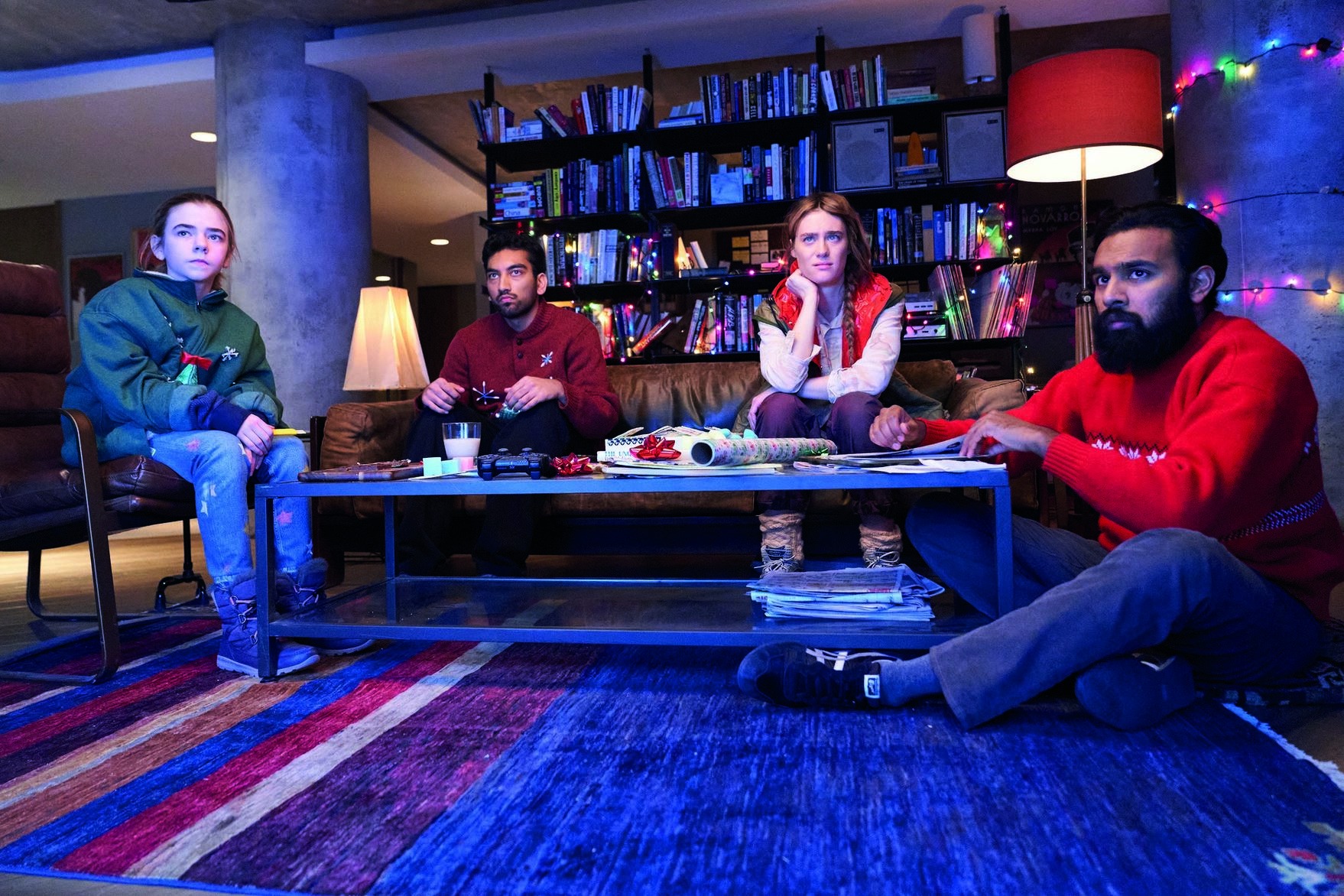
In March 2020, it felt like those of us who were lucky enough to be able to lock down in our homes and watch a lot of television were quickly sorted into two opposing camps. There were those who sought out a total escape from the daily accumulation of death tolls. Absurdist documentaries like Netflix’s Tiger King and endless dating reality shows were this group’s binging material. But alongside them co-existed the people who wanted to immerse themselves in fictional versions of their current situation, rather than look away. Pandemic-based films like Contagion, 28 Days Later, Outbreak and others provided this hit of schadenfreude, filling our screens with safely contained versions of “what if” even as a real-life virus raged through our communities.
These, and indeed many other conventional disaster movies, follow a simple narrative template. The viewer is introduced to the central characters before The Event that will utterly change their lives, either in early scenes or via flashbacks to life before. Initially, the warning signs of the cataclysm are ignored by many, until it is too late to prevent the inevitable. Transmission of the virus surges exponentially, millions die, and our remaining heroes are left to make the best of the life that remains to them in the post-apocalyptic landscape. Invariably, human life finds a way to endure, albeit in much altered and reduced circumstances. To put it another way: it is extremely rare for a mainstream pandemic thriller to end with the camera panning over an empty planet heaped with corpses.
"Station Eleven" and breaking new ground
There is something gratifying about the rhythms of this basic story. It takes a terrifying, incomprehensible unknown and slots it into a familiar structure with a beginning, middle and end. But having now lived through two years and counting of a major viral pandemic, we know that such an event is anything but neat and compartmentalised. Imaginary pandemics will forever hit differently for us, now we have first-hand experience of the chaos such a situation can create in the lives of even the luckiest survivor. With this knowledge has come an appetite for a different kind of on-screen pandemic – something that reflects the true complexities of life with a deadly virus and resists the easy categorisation of everyone as either “victim” or “survivor”.
The best example of this new wave of fictional pandemics was, surprisingly, imagined long before the SARS‑CoV‑2 virus was first identified. Emily St John Mandel’s novel Station Eleven was published in 2014 and follows a group of travelling players touring the Great Lakes region of North America 20 years after a virulent strain of swine flu has wiped out most of the population. Although critically acclaimed from the start, it wasn’t until 2020 that the book went stratospheric, selling hundreds of thousands of copies.
A film adaptation had been in the works since 2015, but in late 2019 this was revealed to have been transformed into a television series for the HBO Max streaming service. By the time the show aired in 2021, the world had been altered irrevocably by events that bore an uncanny similarity to those of the plot.
Yet Station Eleven is worth watching regardless of its coincidental mirroring of reality. Mandel’s story, unlike some of the big-budget pandemic thrillers that scratched that early itch for manageable terror, is small in scale. It focuses tightly on the creative and emotional lives of her main characters. As is the case with real people, their past relationships and traumas inform their present-day behaviour far more than the big-picture facts about a flu virus. The virus intrudes only insofar as it is relevant to their daily existence. There are no forced flashbacks showing what the US president was doing the moment that the virus hit, or dramatic scenes where epidemiologists summarise the worldwide prognosis.
The show is emotional and dark in places, but it is also, audaciously, uplifting. Hinting that people who have suffered through horrible things can also sometimes enjoy the life they still have feels daring, almost taboo, but at our current moment it is deeply satisfying."
"Sweet Tooth" and "Creamery": a new breed of story?
Sweet Tooth, a 2021 adaptation of a comic book of the same name, uses whimsy and fantasy to achieve a similarly broad emotional range. In this scenario, society has ten years prior experienced “the Great Crumble”, because of a pandemic known only as “the Sick”. As a result, most of the world’s humans were killed and human-animal hybrid babies emerged. Gus, a half-deer half-child, has been left alone in the woods after the death of his father. He thus sets out on his own at the age of ten to find his absent mother.
The show is visually gorgeous, setting this cute antlered child in a series of sweeping forest landscapes. The beauty all around him contrasts with Gus’s ambient fear. He is being hunted by a band of humans known as “the Last Men”, who fear that these hybrid children were the cause, rather than the result, of the pandemic. The Sick not only killed people, it also destroyed the survivors’ ability to interact without suspicion. As a portrayal of a pandemic’s ripple effect, it is potent.
Seriousness is another boundary that creators of post-Covid pandemics are beginning to push. Contagion and death are not traditionally fertile grounds for comedy, but choosing to laugh at horrible things can sometimes tease out greater nuance than a purely po-faced treatment. This is definitely the case in Creamerie, a late 2021 comedy-horror show from New Zealand that follows a trio of women running a dairy farm eight years after a viral pandemic has wiped out most of the world’s men. Although free of the patriarchal dynamics that govern other post-apocalyptic fertility-orientated stories such as The Handmaid’s Tale, the working women of Creamerie still find themselves oppressed by a fascist authority. But this one is run by authoritarian women and uses “wellness” practices to achieve its ends. Part black comedy, part satire, part crime caper, it can feel unsettling at first to laugh at the show’s jabs at wellness mantras alongside flashbacks to the gory pyres of male corpses. But when the women discover a man who has survived the extermination and decide to help him evade capture by the sperm-obsessed wellness authorities, the emotional stakes are raised.
Bobby, played by a former Neighbours star, needs their generosity and courage to survive, even if he is physically stronger than the women in authority. The mixture of camaraderie, jadedness and hope exhibited by the central characters is recognisable. In amongst the dirty jokes and Gwyneth Paltrow-esque platitudes – “There’s an ‘us’ in every uterus!” they chant at one point – is a familiar tale about power and who gets to wield it in difficult times.
All three of these post-Covid pandemic portrayals are set years after the initial outbreak. One of the overriding lessons of the last two years has been that pandemics don’t end as neatly as the classic disaster film might have once led us to believe. Rather than being short and sharp, this is a calamity that unfolds slowly, intertwining with our existing lives, rather than blotting them out in one convenient detonation. It’s no wonder that we now prefer pandemic dramas that engage with the myriad ways in which these creeping tendrils of fear can change us and how we live – for the worse, of course, but also for the better.
This piece is from the New Humanist summer 2022 edition. Subscribe here.

